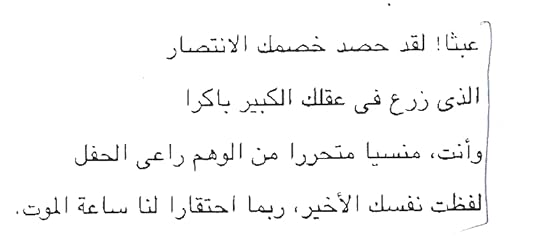What do you think?
Rate this book


509 pages, Hardcover
First published January 1, 1999

Echoing Sidney Hook's complaints of 1949 that Southern writers reinforced negative perceptions of America, with their "novels of social protest and revolt" and "American degeneracy and inanity," the American Committee now resolved to "steer clear of incestuous Southerners. Their work gives an exceedingly partial and psychologically colored account of our manners and morals." [...] Sales of books by Caldwell, Steinbeck, Faulkner, and Richard Wright...slumped in this period.
[E]thics were subject to politics. They confused their role, pursuing their aims by acting on people's states of mind, choosing to slant things one way rather than another in the hope of achieving a particular result. That should have been the job of politicians. The task of the intellectual should have been to expose the politician's economy with the truth, his parsimonious distribution of fact, his defense of the status quo.
My sympathies are with Voltaire, who argued that anyone who is certain ought to be certified. I believe that Milan Kundera's "wisdom of uncertainty" is a touchstone for intellectual inquiry. The Cultural Cold War could be described as a polemic against conviction (which can be distinguished from faith or belief or values) and the strategies used to mobilize one conviction against another. In the highly politicized context of the cultural cold war, this refusal to take sides was designated, pejoratively, as relativism or neutralism. It was not a position or sensibility tolerated by either side—both the Soviet Union and the United States were committed to undermining the case for neutralism, and in the theater of operations which is the focus of this book, Western Europe, that campaign devolved from very similar tactics.
he expressed concern that “this type of leadership for a continuing organization would result in the degeneration of the entire idea (of having a little DEMINFORM) into a nuts folly of miscellaneous goats and monkeys whose antics would completely discredit the work and statements of the serious and responsible liberals. We should have serious misgivings about supporting such a show.”
Hugh Trevor-Roper was appalled by the provocative tone, set by Koestler and taken up by other speakers. “There was very little in the way of serious discussion,”he remembered. “It wasn’t really intellectual at all in my opinion. I realized that it was a reply in the same style to [the Soviet peace conferences] —it spoke the same language. I had expected and hoped to hear the Western point of view put forward and defended, on the grounds that it was a better and a more lasting alternative. But instead we had denunciations. It left such a negative impression, as if we had nothing to say except ‘Sock them!’There was a speech by Franz Borkenau which was very violent and indeed almost hysterical. He spoke in German, and I regret to say that as I listened and as I heard the baying voices of approval from the huge audiences, I felt, well, these are the same people who seven years ago were probably baying in the same way to similar German denunciations of Communism coming from Dr. Goebbels in the Sports Palast. And I felt, well, what sort of people are we identifying ourselves with? That was the greatest shock to me. There was a moment during the Congress when I felt that we were being invited to summon up Beelzebub in order to defeat Satan.”
According to CIA executive Miles Copeland, there was initially “some fuss about the Burnham flirtation with the ‘extreme Left’ (wasn’t he in a ‘cell’ of some kind that included Sidney Hook, Irving Kristol, and Daniel Bell?), but all was okay when someone remembered [a] remark to the effect that if Jim were a serious Communist he would have joined the Party and not been a mere Trotskyist.
'We simply helped people to say what they would have said anyway,' goes the 'blank cheque' line of defence. If the beneficiaries of the CIA funds were ignorant of the fact ..... then their independence as critical thinkers could not have been affected.,.... Allegedly
'The most effective kind of propaganda is defined as the kind where the subject moves in the direction you desire for reasons which he believes to be his own.'